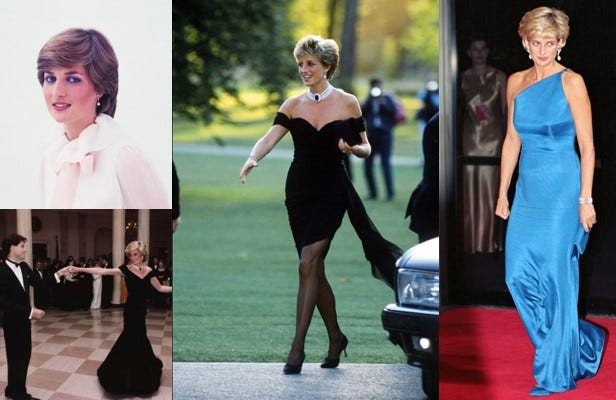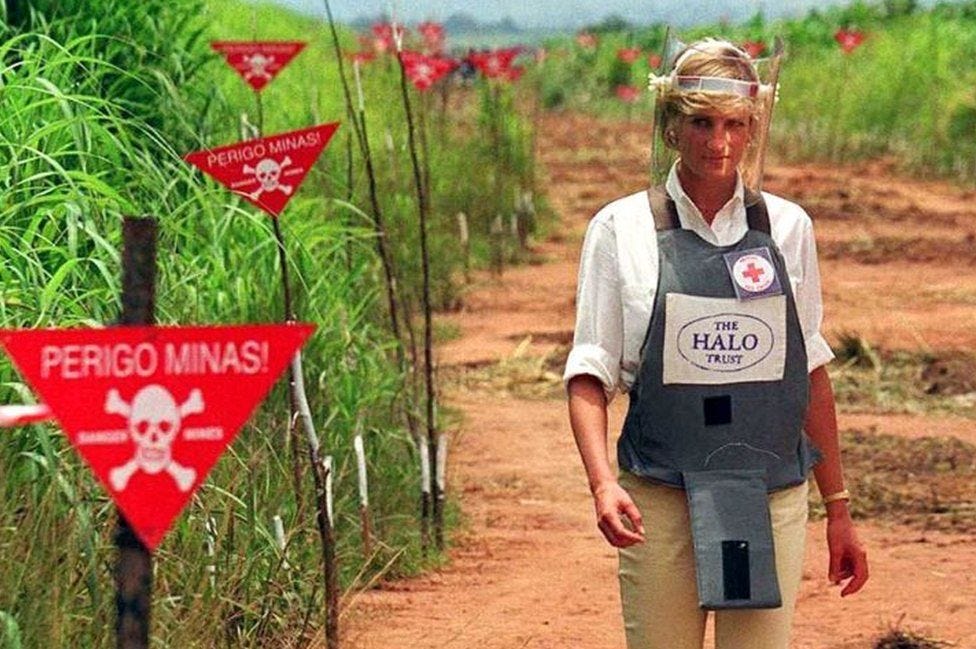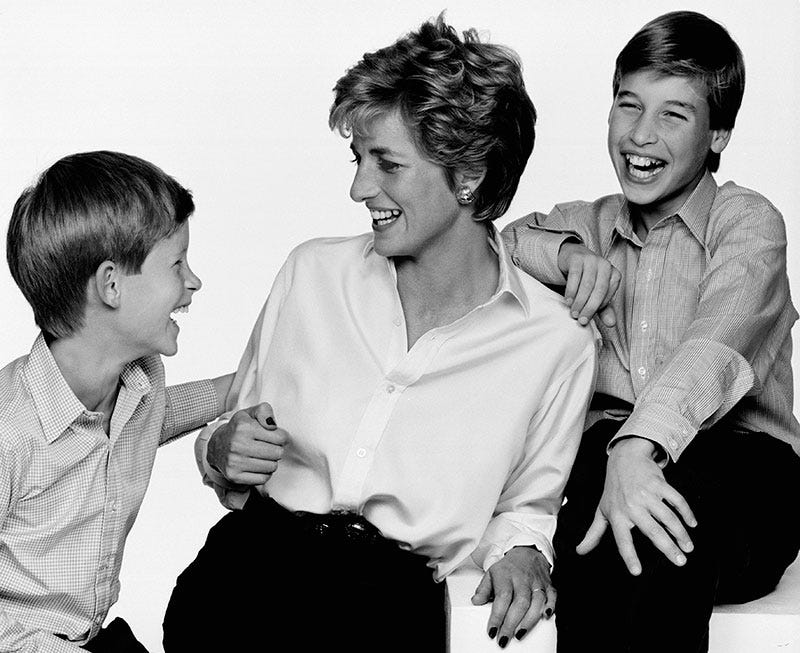Special edition: Diana at 60
To commemorate what would have been Diana, Princess of Wales' 60th birthday on July 1, we take a look at her remarkable life in pictures

To mark what would have been Diana, Princess of Wales’ 60th birthday on July 1, we take a look back at her incredible life, which although short, left a lasting legacy. Kerry wrote special reports for The Saturday and Sunday Telegraph this week - here’s what she put together.
The Spencer years

Royalty, love and betrayal was part of Diana Frances Spencer’s life from an early age. Born July 1, 1961, at Park House on the Sandringham Estate in Norfolk, she was the youngest daughter of the then Viscount and Viscountess Althorp, with siblings Jane, Sarah and younger brother, Charles. Her father had been an equerry for King George VI and the young Queen Elizabeth II. But the privilege also came with pain, when her mother Frances abruptly left her father for Peter Shand Kydd. Her brother Earl Spencer described five-year-old Diana desperately waiting for Mummy to return. “While she was packing her stuff to leave, she promised Diana she’d come back to see her,” he told The Sunday Times. “Diana used to wait on the doorstep for her, but she never came.”
Only 19 when she got engaged to Prince Charles, ballet-dancing Diana enjoyed the briefest period as a single girl in London. Living in a flat in South Kensington, with three friends, she worked as a cleaner, nanny and nursery teacher – famously snapped outside the school in her see-through skirt. She later told biographer Andrew Morton in Diana: Her True Story, that her time in Coleherne Court was her happiest, saying, “I laughed my head off there,” so it’s fitting English Heritage is placing a plaque there. When she moved into Clarence House ahead of the wedding, she said her bodyguard told her it would be the last night of freedom for “the rest of her life.” “It was like a sword went through my heart,” she said.
Fairy-tale romance

To the watching world, Charles and Diana’s wedding on July 29, 40 years ago, looked like the ultimate fairy-tale. Ever since a blushing 19-year-old Diana Spencer had faced the cameras at her engagement in February, we were enraptured. “Next to Prince Charles I can’t go wrong,” Diana had gushed, while Charles ominously said, “Whatever in love means.”
Some 750 million people around the world watched the wedding on TV, with Diana climbing out of The Glass Coach at St Paul’s Cathedral, looking like Cinderella in her somewhat crushed giant taffeta gown with its 7.6 metre train. “I was deathly calm,” Diana later told Andrew Morton. “I felt I was a lamb going to the slaughter.”
One TV commentator described them as “a couple so obviously in love a whole nation could forget its troubles for one day.” But they couldn’t forget theirs. Cracks began to appear in the relationship and their first tour of Australia in 1983 widened the chasm, as viewers of The Crown watched play out on screen. She later admitted despite the smiles, she was unhappy and struggling with bulimia.
The private struggles would continue and despite the joy of motherhood with Princes William and Harry, Charles would find solace with Camilla and their marriage eventually become untenable. On a royal tour of India in 1992, shortly before they separated, Diana poignantly posed solo at the Taj Mahal and the happy snaps of them hand in hand on honeymoon in Balmoral were replaced with images of unhappiness. They finally divorced 1996.
A new type of royal mum

Motherhood transformed the young Diana. When she gave birth to William in 1982, aged just 20, she showered her children with love and affection, a far cry from Charles’ distant relationship with his parents. “I hug my children to death,” she told Andrew Morton. “I get into bed with them at night, hug them and say, ‘Who loves them most in the whole world?’ and they always say, ‘Mummy.’ I always feed them love and affection, it’s so important.”
Images of her with William and Harry simply radiate joy. From the photo of Diana, arms held wide to hug her sons on board The Royal Yacht Britannia in Canada in 1991, to the picture of mum and sons whizzing down the log flume ride at Thorpe Park amusement park screaming with laughter in 1993, Diana was a hands-on mother who set out to do things differently within the Royal Family.
Instead of farming her babies out to nannies in distant quarters in the palace, Diana made sure the nursery was off her bedroom and breastfed both boys. She created a family den in Kensington Palace where she would relax with her boys and watch videos. She insisted on taking nine-month-old William with them on their tour of Australia in 1983 – unlike the Queen who left a young Charles at home when she went to spend Christmas in Malta with Prince Philip – it was inconceivable to Diana to be parted from her baby.
She also made sure her schedule was built around important school dates and would turn up to sporting events like any regular mum, in-between official engagements. “Family is the most important thing,” she said. “I live for my boys, I would be lost without them.”
Style icon

Despite revealing she only had one nice dress when she got engaged, Diana quickly learnt the power of clothes and went from ingenue to the most stylish woman on the planet, in a few years. From her Emanuel wedding gown to the “Travolta dress”, Diana learned she could get attention, headlines and power to change, through her image.
Everything she wore sold out or started a trend, from the pale pink pussy-bow Emanuel blouse she borrowed for a Vogue shoot in 1981, which started a trend for “Lady Di blouses”, to her puff-sleeved ivory silk taffeta and antique lace gown, which brought the big white wedding into vogue.
As she grew in confidence, so did her style, with a dramatic new cropped hairstyle in 1990 and more glamorous wardrobe. Post-split, Diana chose sexier looks, the ultimate being the “Revenge dress”, the black Christina Stambolian mini-dress she wore on the same night in 1994 that Charles declared he’d been unfaithful on national TV. Guess who got the headlines.
She began wearing international labels like Versace, Ralph Lauren and Valentino and her new look was embodied by the one-shouldered blue Versace shift she wore to open the Victor Chang Institute in Sydney in 1996. “It was amazing to see her transformation,” said designer Valentino. “Just looking into her sparkling eyes, you could tell how finally she was free, so happy – herself.”
Charity queen

Diana told Martin Bashir on that infamous 1995 Panorama interview she’d “like to be a queen of people’s hearts. I’ve got tremendous knowledge about people and how to communicate. I think the biggest disease this world suffers from… is the disease of people feeling unloved,” she said.
She certainly achieved that, using both her empathy and fame to highlight causes close to her heart. Instead of shaking hands, she hugged and kissed people and crouched down to chat to children. She broke down barriers - famously shaking hands with an AIDS patient at London’s Middlesex Hospital and hugging a child with AIDS in New York, at a time when fear of the condition was at its peak.
From touching a leprosy victim in Indonesia, to carrying AIDS toddlers in Brazil, or taking sons William and Harry to homeless shelters in London, Diana genuinely wanted to make a difference. The image of her walking through a partially-cleared but active minefield in Angola in 1997 showed what a powerful force for change she had become by the end of her life as she brought the Red Cross campaign for an international ban on landmines to the world’s attention. Shortly after her death the Mine Ban Treaty was signed and the International Campaign to Ban Landmines won the Nobel Peace Prize.
In her last months she auctioned off her designer dresses in New York, raising $4.4m for AIDS and cancer charities and visited Bosnia, again highlighting landmines.
“Nothing brings me more happiness than trying to help the most vulnerable people in society,” she said. “It is a goal and an essential part of my life, a kind of destiny.”
Love and loss
While rumours abounded Dodi Fayed was going to propose to Diana, royal insiders say she was still in love with Pakistani heart surgeon Hasnat Khan. She had been seeing him since 1995 and said he “has given me all the things I need,” according to biographer Tina Brown. The only problem was the quiet, serious Hasnat did not want to live in a glare of publicity. He was, according to Diana, “the one person who will never sell me out.” He was also the opposite of her doomed affair with James Hewitt, the dashing cavalry officer who has made a career out of his fling with Diana, famously trying to sell her love letters for £10 million.
It was looking for something to do in the summer holidays, that set in chain the tragic events of August 31, 1997. In July, Diana accepted an invitation from Harrods’ owner Al Fayed to spend a week at his villa in St. Tropez – and there met Dodi. Her friends, including Rosa Monckton, former MD of Tiffany’s, think Diana was trying to make Hasnat jealous, but thanks to that fateful high-speed journey in Paris, when the car, driven by Henri Paul and pursued by paparazzi, crashed in the Pont de l’Alma tunnel, her life – and work – was tragically cut short.
“The public could see that after years of heartache and despair she had begun to find her role in life,” Andrew Morton says. “Her tragedy is that she did not live long enough to fully enjoy the fruits of her labours.”






